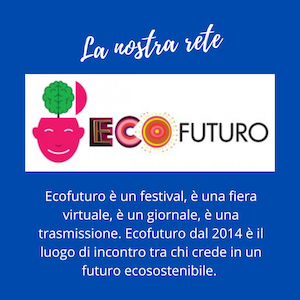Batterie elettriche dalla cacca
Inviato da Jacopo Fo il Lun, 02/09/2009 - 06:22Incredibile ma vero.
Nella trasmissione “La nobile storia della cacca“, condotta da Monty Halls
in onda su History (Sky), si mostra il funzionamento dell’invenzione di un giovane maestro di scuola del nord dell’India: H. S. Yadav. Il signor H. S. Yadav ha scoperto che si può produrre elettricità semplicemente riempiendo un barattolo di letame bovino, aggiungere sale (e suppongo acqua) una batterie elettrica esaurita (di quelle semplicissime che alimentano radio, torce elettriche ecc). Alla pila elettrica vanno collegati due fili (uno per ogni polo della pila). La pila a sterco di vacca produce 8 watt di potenza per 45 giorni.
Ho cercato su internet ma non ho trovato niente.
Mi sembra una scoperta incredibile.
H. S. Yadav la usa per portare l’elettricità nelle case e permettere ai bambini di studiare la sera.
Se la notizia fosse vera sarebbe una grande rivoluzione tecnologica.
C’è qualcuno che ne sa qualche cosa?
Ecco qui l'articolo che Ventsetmarees mi ha segnalato
Now, charge your cell with dung!
23 Jan 2007, 2329 hrs IST, Radha Sharma, TNN
Print Email Discuss Share Save Comment Text:
AHMEDABAD: What do you do if you are left without electricity for long stretches of time? You make your own electricity. Simple. Niruttam Kumar
Singh and Harvansh Yadav, a student-teacher duo from Gangagarh village in Bulandshaher, Uttar Pradesh, have made a cow dung battery that lights up electric bulbs, charges mobile phones and brings alive radios!
"In Gangagarh,we barely get five hours of electricity daily, making it difficult for students to study at night," says Yadav,who is in Ahmedabad to showcase his innovation at a workshop on 'Green Grassroots Innovation, Incubation and Enterprises' organised by the Society for Research and initiatives for Sustainable Technologies and Institutions (SRISTI) at IIM-Ahmedabad.
Three years ago, Yadav and Niruttam, a class 7, student came together to resolve the issue. "We knew cow dung produced biogas and decided to experiment with it to produce electricity.
We collected cow dung in a plastic container and put two discharged batteries in it. As we charged cow dung with a salt water solution, the positive and negative charges produced were collected in the batteries and interconnected in series to produce a current," Niruttan said.
The duo charged mobile phones with their innovation. "Each unit produces 1.5 volts of current," says Niruttam, adding, "The cow dung needs to be replaced once in 45 days. If one wants more efficiency, one can put sulphuric acid."
The two proudly say that their innovation has changed life in Bulandshaher. "Around 250 households in Gangagarh and neighbouring Kamonah, Jinamai, Risoolgarh and other villages use our battery to light bulbs and listen to radio. We teach them how to make such batteries free."
Niruttam is now planning to improve the design. "We want to use something that doesn't give a foul smell — cow urine perhaps." Meanwhile, this innovation is all set to charge mobile phones at Gujarat University. "We are planning to put a mobile phone charging unit in the campus for students," says professor Anil Gupta of SRISTI.
http://timesofindia.indiatimes.com/articleshow/1410529.cms















